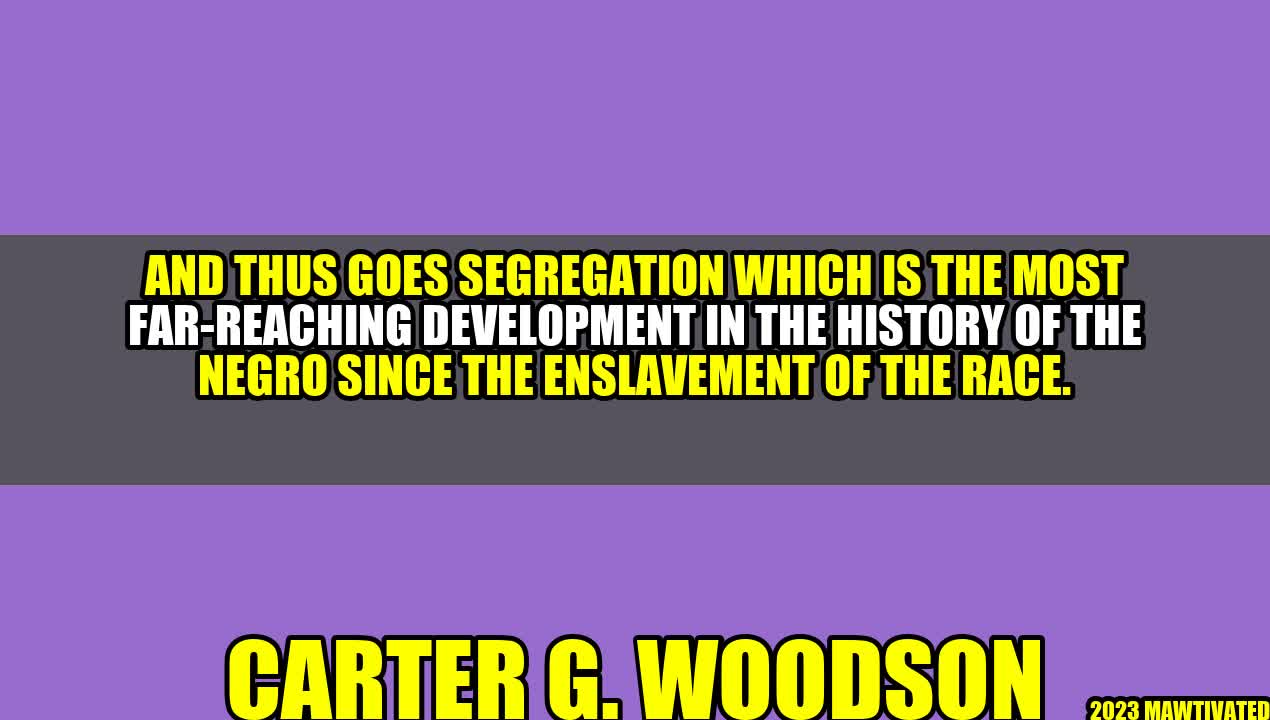The Far-Reaching Development of Segregation: A Historical Journey

It was a scorching summer day in 1955 when Rosa Parks, a 42-year-old African American woman, refused to give up her seat on a Montgomery, Alabama bus to a white person. Her simple act of defiance sparked the Montgomery bus boycott, which lasted for 381 days and changed the course of history.
Segregation, the systematic separation of people based on their race, has been a dark stain on the history of humanity. It is a painful reminder of the time when the color of one’s skin determined their social status, rights, and opportunities. Carter G. Woodson, a renowned African American historian, once said, “And thus goes segregation which is the most far-reaching development in the history of the Negro since the enslavement of the race.”
Woodson was born in 1875 in Virginia, during a time of great racial inequality. Despite the challenges he faced as a black man, he excelled in his studies and earned a Ph.D. from Harvard University, becoming the second African American to do so. He went on to dedicate his life to promoting the study of black history and culture, founding the Association for the Study of Negro Life and History in 1915 and initiating “Negro History Week,” now known as Black History Month, in 1926.
Examples of Segregation
Segregation existed in almost every aspect of life, from education and housing to transportation and entertainment. Here are some examples:
- Jim Crow laws in the Southern states, which mandated separate schools, bathrooms, restaurants, and drinking fountains for black and white people
- Redlining practices by the Federal Housing Administration, which denied loans and mortgages to black families who wanted to live in white neighborhoods
- Internment camps for Japanese Americans during World War II
- Bans on interracial marriages and relationships
- Restricted access to voting rights, citizenship, and employment opportunities
- Segregated sports teams, music concerts, and theaters
Impact of Segregation
The impact of segregation on individuals and society was immense. It created a deep sense of inferiority and shame among black people, who were constantly reminded of their second-class status. It also perpetuated racial stereotypes and prejudices, making it difficult for people to interact with those who were different from them.
Moreover, segregation deprived people of opportunities for growth, learning, and innovation. It limited their ability to pursue their dreams, express themselves creatively, and contribute to society. As Woodson noted, “if you can make a man believe that he is inferior, you don’t have to compel him to seek an inferior status, he will do so without being told.”
The End of Segregation
The end of segregation was a long and difficult journey, marked by protests, legal battles, and social movements. It involved many people from different walks of life, who were determined to break the chains of prejudice and discrimination.
Some of the key events that led to the end of segregation are:
- The Brown v. Board of Education Supreme Court case in 1954, which declared that segregation in public schools was unconstitutional
- The Montgomery bus boycott in 1955-1956, led by Martin Luther King Jr., which forced the city to desegregate its buses
- The Civil Rights Act of 1964, which prohibited discrimination based on race, color, religion, sex, or national origin in public places, housing, employment, and education
- The Voting Rights Act of 1965, which removed barriers to voting for African Americans and other minorities
- The Fair Housing Act of 1968, which banned housing discrimination based on race, color, religion, sex, or national origin
Conclusion
Segregation was a shameful part of our history, but it also serves as a reminder of the power of determination and collective action. By fighting against segregation, people have shown that change is possible, even in the face of seemingly insurmountable obstacles.
As we move forward, we must remember the lessons of the past and work towards creating a more inclusive, equitable, and just society. We must continue to challenge discrimination, prejudice, and intolerance, and carve a path of hope and progress for future generations to come.
Author: Carter G. Woodson. Category: Society and History. Keywords: segregation, discrimination, civil rights, equality, justice, prejudice. Hashtags: #Segregation #CivilRights #Equality #Discrimination #Justice.

Curated by Team Akash.Mittal.Blog
Share on Twitter
Share on LinkedIn